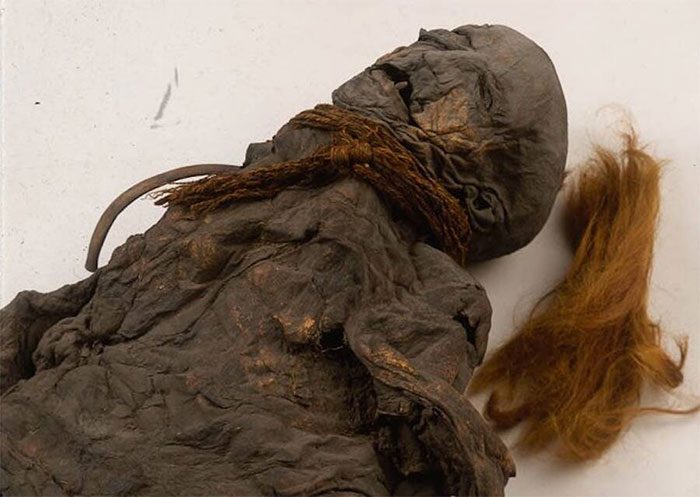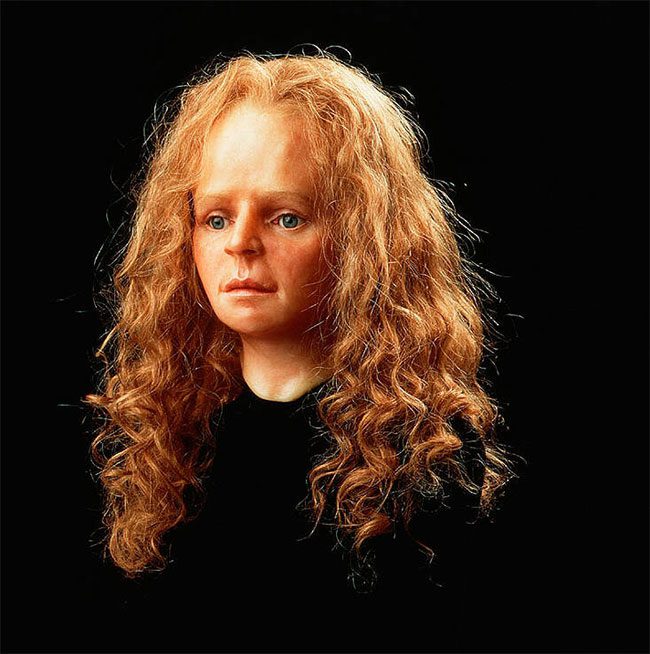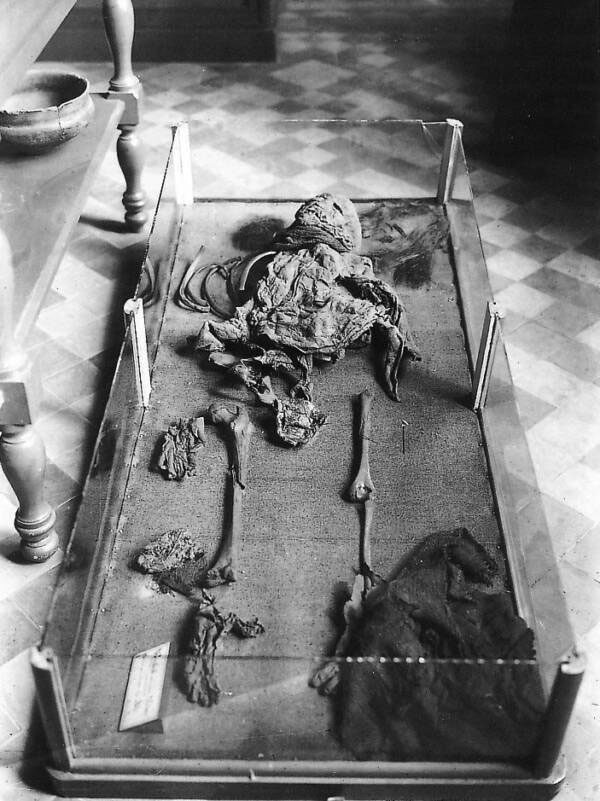A 2,000-year-old mummy was discovered in a bog in the Netherlands in 1897, with many believing that this young girl was executed or sacrificed.
On May 12, 1897, two workers were dredging peat from the Stijfveen bog near the village of Yde (Netherlands) when they stumbled upon a deformed, incomplete corpse, dark in color with red hair. Officials at the time suggested that the girl had likely been murdered due to a noose around her neck and a stab wound near her collarbone.

The Yde Girl was killed sometime between 54 BC and 128 AD. (Photo: Wikimedia Commons).
It took a century for scientists to determine that the remains belonged to a 16-year-old girl who was slightly over one meter tall, having died around 54 BC to 128 AD. Today, the mummy is known as the “Yde Girl” and has been preserved for 2,000 years.
The History of the “Yde Girl”
When officials from the village of Yde and the Drents Museum of Art and History received the body on May 21, 1897, its identity remained a mystery. The noose around the neck and the mutilated limbs indicated that this individual had been brutally murdered. Additionally, half of the hair on the corpse was cut short, and the teeth were missing.
There was no way to ascertain the age of the Yde Girl until the 1940s when the radiocarbon dating method was first published. It wasn’t until 1992 that Professor Richard Neave from the University of Manchester performed a CT scan of the skull and confirmed that the remains belonged to a 16-year-old female, as she lacked wisdom teeth. She was found to have scoliosis, which caused her body to be weakened and her right foot to swell irregularly, leading to a limp.
Radiocarbon dating revealed that the young girl died in the early Common Era, and the tannic acid in the bog had preserved her remains since then. In 1994, when experts reconstructed the mysterious mummy’s face, “the Yde Girl” gained worldwide fame.
The reason for the victim’s murder remains uncertain, but Dr. Roy van Beek from Wageningen University has offered some speculations: “There are two hypotheses that have been proposed. The first is that the bodies discarded in the bog could belong to people who violated rules or were convicted of something. The second explanation, which is more widely accepted, is that it was a sacrifice to a higher power.”

Facial reconstruction of the “Yde Girl” conducted in 1994. (Photo: Drents Museum).
How Did the Yde Girl Die?
In 2019, using studies on the landscape and terrain as a foundation, Dr. van Beek and his colleagues determined that the Yde Girl’s death may have been a matter of privacy.
Dr. van Beek stated: “The girl might have come from a nearby settlement on the Yde hillside. However, her body was left in a small, relatively shallow bog about one kilometer away.”
Officials from the Drents Museum declared that her hair was cut off by villagers in the 19th century. Furthermore, cutting a woman’s hair for committing adultery was a common practice during the Middle Ages.
However, there is no additional evidence regarding a husband or any indication that she was disabled or deformed. Some suggest it is likely that the young girl was an ideal target for child sacrifice in hopes of agricultural prosperity during that period.

The Yde Girl mummy on display at the Drents Museum. (Photo: ATI).
To this day, the circumstances surrounding the death of “the Yde Girl” remain a mystery. Currently, the mummy is preserved and exhibited at the Drents Museum in Assen, Netherlands.




















































